Univar
Our History
1920s: The Birth of a Distributor
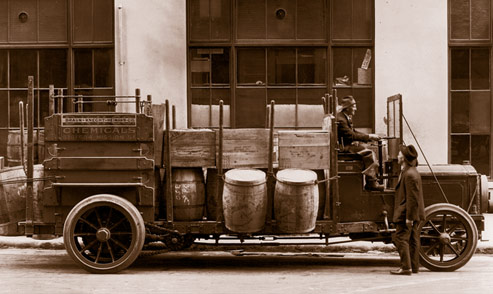
On August 8, 1924, George Van Waters and Nat Rogers filed incorporation papers in Olympia, Washington. The small firm sold paint, raw materials, caustic soda, soda ash, cotton linters, dry colors for paint, and denatured alcohol. Their willingness to buy—and sell, for profit—new types of materials helped the company grow. When Van Waters & Rogers entered the laundry supply business, it paved the way for the company’s future—chemicals. “We sort of glided into the industrial chemicals business,” Nat Rogers said. Near the end of the decade, the company moved into a 5,000 square foot facility just south of downtown Seattle. Soon after, they expanded into the entire facility and plant next door. Times were good. The Dow Jones industrial average reached an all-time high of 381.17. Then, on October 24, 1929, the stock market crashed
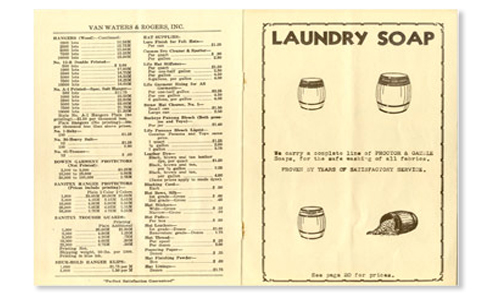
1930’s: Flourishing During the Great Depression

At the lowest point in the Great Depression, when roughly one in four people were jobless, Van Waters & Rogers was growing by leaps and bounds, adding people, products and places to its business. "What saved us – and our customers – was that we were small," Nat Rogers said. "As a small but widely diversified operation, we survived rather handily." In 1935, sales were about $657,000. The following year they topped $1 million, and by the end of the decade the company was closing on the $2 million mark. Locations were added in Portland, Oregon, Spokane, Washington and Los Angeles, California. A notable addition was the industrial chemicals division headed by Glen McElvain, a chemical salesman who was instrumental in the acquisition of local chemical companies. Van Waters & Rogers flourished during the Great Depression, but soon World War II would engulf the United States.
1940’s: Seller's Market
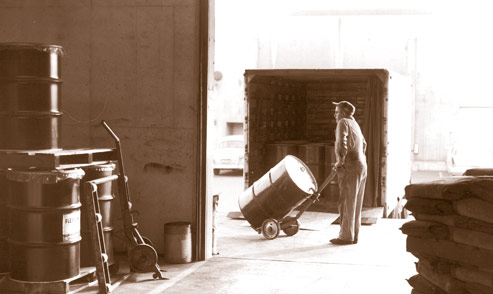
On December 7, 1941, Japan attacked Pearl Harbor, and the United States entered World War II. World trade routes were disrupted or simply dried up, causing shortages. A government priority system was created to divert essential resources to the war effort. The system favored companies that had been buying items in large quantities for several years – like Van Waters & Rogers. "All commodities were hard to get," Nat Rogers said. "It was a seller's market, and we could move almost anything we were lucky enough to get our hands on." Sales continued to skyrocket, jumping from $2 million in 1940 to more than $18 million in 1949. Acquisitions led to market entries in San Francisco and Texas. And two women, Noreen McKee and Liala Thompson, were the first women appointed to officer positions. In 1949, Van Waters & Rogers celebrated its 25th anniversary.
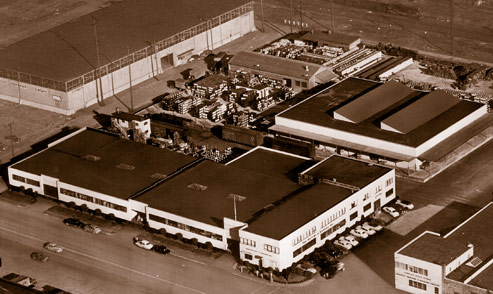
1950’s: Boom Years

In 1956, Van Waters & Rogers made its first public offering of stock. Two 1950 acquisitions – Industrial Materials Ltd. of Vancouver, British Columbia, and Braun-Knecht-Heimann of San Francisco – set the tone for the decade. The company strategy was simple: acquire rather than be acquired. By the end of the decade, Van Waters & Rogers had locations in all 11 western states, Texas and Western Canada. Sales climbed from $18 million to more than $80 million in 1959. Capital investments included the forerunners of today's computers. Data processing equipment was installed in computer centers in Seattle, San Francisco and Los Angeles, increasing operating efficiency and profits. Unfortunately, co-founder George Van Waters suffered from cerebral arteriosclerosis, limiting his day-to-day participation in the growing company. His employees kept the parking space for "Van" empty in silent tribute.
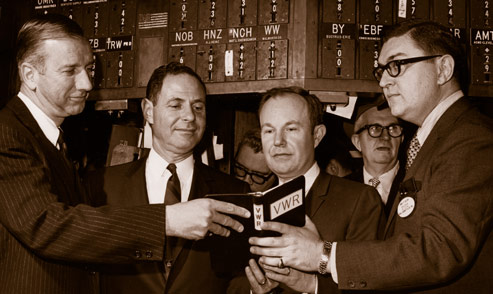
1960’s: Growing Pains

While the country faced upheaval, George Van Waters, co-founder of Van Waters & Rogers, retired and company president L.H. Reyburn died suddenly. Milt Harris succeeded Reyburn, and company headquarters relocated to San Francisco for a brief period. Meanwhile, Jim Wiborg, a Vice President of United Pacific Corporation, had a merger on his mind. The two companies had strong ties: United Pacific's founder Ben Ehrlichman was a close personal friend of Nat Rogers, and Wiborg was Nat's son-in-law. By mid-decade, Nat told his son-in-law, "I think the time may be ripe." Shareholders approved the merger in 1966 and Van Waters & Rogers became VWR United. Growth surged, and the decade ended with the company's listing on the New York Stock Exchange on March 6, 1969.
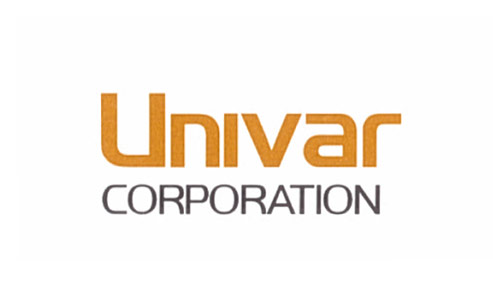
At the March 25, 1970 meeting of the board, co-founder Nat Rogers retired from the corporation. When Milt Harris stepped down later that same year, Jim Wiborg became CEO. Along with a leadership change came a name change. The name "VWR United," resulting from a 1966 merger with United Pacific, was highly unpopular. So a new name, "Univar," was adopted in 1974. Wage and price controls opposed by the Nixon administration were a hardship for most businesses. Yet the company continued to expand through acquisitions with the stated goal of becoming a national distributor. The most important acquisition was the purchase of McArthur Chemical, establishing Univar as a major distributor throughout Canada. At the close of the decade, new challenges lay ahead for the country. An oil crisis and rampant inflation would soon give way to a deep recession and high unemployment.
1970’s: Changing of the Guard

At the March 25, 1970 meeting of the board, co-founder Nat Rogers retired from the corporation. When Milt Harris stepped down later that same year, Jim Wiborg became CEO. Along with a leadership change came a name change. The name "VWR United," resulting from a 1966 merger with United Pacific, was highly unpopular. So a new name, "Univar," was adopted in 1974. Wage and price controls opposed by the Nixon administration were a hardship for most businesses. Yet the company continued to expand through acquisitions with the stated goal of becoming a national distributor. The most important acquisition was the purchase of McArthur Chemical, establishing Univar as a major distributor throughout Canada. At the close of the decade, new challenges lay ahead for the country. An oil crisis and rampant inflation would soon give way to a deep recession and high unemployment.
1980’s: Refocus on Distribution


In the 1980s, a deep recession created a gloomy financial outlook for many companies, and unemployment soared to its highest point since 1940. Univar co-founder George Van Waters died after a long illness. Yet the company became North America's largest chemical distributor during the decade. Sales topped $1 billion for the first time. Responding to new government regulations and environmental concerns, the company dedicated itself to product stewardship and introduced ChemCare, a new waste management service. Univar acquired McKesson Chemical with financial backing from Royal Pakhoed, a 370-year-old Dutch company. Combined, the two distribution giants formed a coast-to-coast network of more than 100 locations in the United States and Canada. The decade ended on a financial high note. As one shareholder at the 1989 annual meeting said, "It was just good news, good news and more good news".
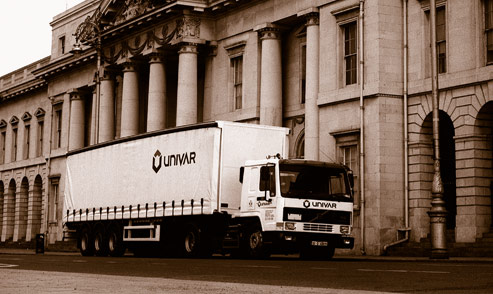
1990’s: Going Global

The 1990s began with the Persian Gulf War. Company co-founder Nat Rogers died in February 1990, just a month before his 92nd birthday. By the end of the decade, the economy was going strong and e-commerce had given new meaning to "global marketplace." The company fully embraced the information age with the launch of UVX2000, a state-of-the-art computer system linking locations, customers, and suppliers; a corporate Web site; e-commerce initiatives such as eBusiness Partners; and an Internet-based chemical distributor named ChemPoint.com. Acquisitions led to further expansion. Univar acquired four chemical distribution companies in Europe, forming Univar Europe. Then Royal Pakhoed acquired Univar in 1996, and it merged with Royal Van Ommeren in 1999 to become Royal Vopak.
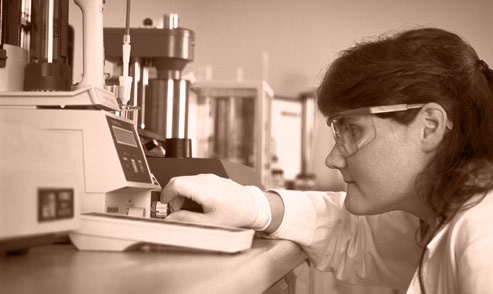
2000’s: The New Millennium

The new millennium did not result in the worldwide computing catastrophe many predicted. However, a recession and 9/11 sent the nation and commerce into a freefall. As industries such as textiles and electronics moved off shore to lower costs, Univar focused its growth strategy on industries that were population-based, such as food, pharmaceuticals, personal care, coatings and energy. Univar hired and developed sales specialists, food scientists and PhDs to assist customers with product formulations and technical solutions. Growth continued through the acquisition of Ellis & Everard, which included operations in the UK, Ireland and North America. In 2002, Univar split off from Royal Vopak as an independent company and world leader in chemical distribution.
Source: http://www.univar.com/About/Our-History.aspx

|
Inventory Coordinator
Monitors and updates inventory records including: records changes in inventory (purchases, sales), reviews invoices and inventory reports, monitors and records stock transfers, and produces inventory reports as required
Warehouse Operator – Night Shift
Responsibilities: Perform manual warehouse duties as assigned or directed. Load and unload company trucks, common carriers and customer vehicles using forklift and other required equipment.
Environment Health and Safety Representative
What you will do: Handling and communication of applicable government regulations; participates in maintaining branch compliance and more.